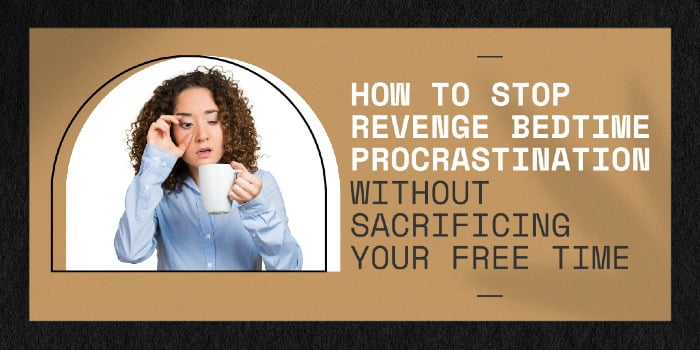If you have sciatica, you’ll be all too familiar with the pain that can keep you tossing and turning at night, rather than getting the peaceful sleep that you deserve.
It’s a common problem. So common in fact, that cases of sciatica have doubled in the past decade and insomnia has become an incredibly common symptom of chronic back pain.
But don’t worry. If you’re looking at how to prevent morning sciatica pain and get a comfortable night’s sleep, we’ve got you covered in our guide to the best position to sleep with sciatica.
What is sciatica?
So before we get into how to sleep with sciatica, let’s take a closer look at what it is.
Sciatica is a type of nerve pain that affects the sciatica nerve. This is a massive nerve in your body that starts in your pelvis and continues down your leg to your knee. There, it connects to a series of other nerves that run down the calf and into the feet.
Most sciatica patients will feel:
- Pain in their lower back;
- Sharp shooting pains that travel from the lower back to the foot;
- Muscle weakness in one or both legs or feet;
- Numbness in one or both legs;
- Tingling, or pins-and-needles sensation in the leg, foot or toes.
Because a lot of people feel sciatica pain in their lower back, it’s often confused with other muscle injuries. However, sciatica is known for its ability to affect not just the lower back, but also the leg and foot. In addition, sciatica pain is usually located on one side of the body.
What causes sciatica?

Sciatica is caused when something is compressing or irritating the roots of the sciatica nerve inside the body.
This can happen for a number of reasons, including:
- Bulging or slipped disk in the spine.
- Spinal infections, including tumours in rare cases.
- Misaligned vertebrae.
- Spinal stenosis, where the space around the spinal cord (the spinal column) narrows, compressing a section of nerve tissue.
- Degenerative disc disease, which happens when the discs that cushion the vertebrae break down and rub against each other. This is more common in older age.
- Spondylolisthesis, when one vertebra slips over another one.
- Muscle spasms in the buttocks or back.
- Pregnancy.
- A lack of exercise or obesity.
- Wearing high heels.
- Having tight muscles in the back or hips.
- Injury to the sciatic nerve from a fall or accident.
Because Sciatica causes pain and discomfort, most people also tend to develop sleep disorders like interrupted sleep, sleep anxiety or insomnia.
Why does sciatica get worse in bed?
For those suffering from sciatica, they’ll know all too well that the pain can feel much worse at night. This can happen for several reasons.
First, depending on the position that you’re laying down in, you could be causing additional pressure to and pinching your sciatica nerve, increasing the pain that you’re feeling. This is why it’s incredibly important to not only find a position to sleep in a night that you feel comfortable in, but also to find a position that will prevent further sciatica pain in the morning.
In addition, cooler temperatures can also make a difference in muscle and nerve pain. Having a nice cool room may make it easier to fall asleep, but they can also aggravate certain conditions and make them feel worse, which is the same for those that suffer from conditions such as arthritis.
And finally, laying in bed at night tends to be the time where our thoughts race. You have less distracting you and more time to concentrate, so you might be noticing, and fixating on, the pain more than usual. That’s not to say it doesn’t hurt more, but that you also might not be able to stop thinking about it as well.
It’s like having a mouth ulcer and constantly poking it with your tongue.
What is the best position to sleep with sciatica?
If you have sciatica, you need to find a position at night that makes you feel comfortable but also achieves any extra pressure on your sciatica nerve. This will help prevent making the pain worse and leaving you waking up in the morning sore.
Now, there’s no one perfect position to sleep with sciatica. It’s about making changes and alterations to make your most comfortable position work for you.
However, there’s one sleep position that is not recommended for anyone with sciatica: sleeping on your stomach.
Sleeping on your stomach is much more likely to increase sciatica pain than any other position. This is because laying on your stomach adds extra pressure to your joints and muscles, and will misalign your spine as you face one side or another. This not only causes regular muscle pain, including a stiff neck or back but adds additional pressure to your sciatica nerve.
Simply put, if you sleep on your stomach, you’re going to be doing more damage to your sciatica nerve. That means more pain and less sleep for you.
Luckily, only 5% of people in the UK are stomach sleepers. So, what is the best position to sleep in with sciatica?
1. Sleeping on your back

Sleeping on your back is one of the best positions that you can be in if you suffer from sciatica. This is because it gives your head, neck and spine a chance to rest in a neutral position, alleviating any stress or pressure on your sciatica nerve.
There is one important step you need to follow if you suffer from sciatica: You need to elevate your knees if you’re sleeping on your back.
This will make sure that your sciatica nerve isn’t trapped at all, helping to alleviate the pain and give you a more comfortable nights sleep. To do this:
- Lay on your back and get comfortable.
- Then, bend your knees slightly towards the ceiling. You don’t want to be sat upright, but have your knees elevated enough to ease pressure on your sciatica nerve.
- Place pillows beneath your knees to keep them elevated. If you prefer, you can use a wedge or cylindrical pillow underneath your knees if that’s more comfortable.
Sleeping on your back comes with one downside though, it makes your snoring worse. This is because your tongue naturally drops to the back of your mouth while you’re on your back, reducing the size of your airways.
If you’re a snorer and want to sleep on your back, you may want to consider adding some anti-snoring pillows to the cart while you’re at it.
2. Sleeping on your side
Sleeping on your side is the most popular sleeping position in the UK, and might be the position that you feel most comfortable in at night. If you’re suffering from pregnancy-related sciatica, this will be the position recommended for you.
If you’re sleeping on your side with sciatica, you’ll want to place a pillow between your thighs or legs to help reduce the pressure of your spine and keep your body’s natural alignment.
Wedge pillows, such as The Doctor Developed Knee Pillow, are great choices for this sleeping position. Strapping it into place on your knees, you can rest assured that it won’t move during the night.
- Free handbook written by licensed medical doctors: This electronic handbook (free download) explains various causes of hip, knee, back and sciatica pain, and uses of the leg pillow for sleeping.
- The perfect, painless night's sleep: This pillow provides knee support and hip support all night long. The knee pillow for sleeping on side will prevent pelvic rotation and improve spinal alignment. This helps sciatica, hip pain and back pain.
- Designed for spine and back pain: High density memory foam pillow is wrapped with a machine washable soft airtech fabric. A fitted leg strap attaches the knee cushion to your leg all night long, whether you're sleeping on your side or back.
For even more support while sleeping on your side, you can also place a pillow underneath your waist. This will help ensure you stay in that position the whole night, without putting extra pressure on the lower back.
What mattress is best for sciatica?
The mattress you sleep on makes a massive impact on the quality of your sleep. Having a good mattress is like walking with trainers on, rather than a pair of sharp, beaten up pair of flip flops.
They make a difference and are worth every single penny that you put into them.
So, if you have sciatica, you’ll need a mattress that can provide as much support and comfort as possible. This means that you’ll best off with a medium-firm mattress to get you through the night.
A medium-firm mattress will ensure that you have enough support to make sure your spine is aligned but isn’t too hard that it will put any extra pressure on your sciatica nerve. In addition, it will also stop your body from sinking into a mattress that’s too soft, which will cause the body to curve out of position.
If you’re considering a new mattress, take a look at our reviews of the best mattresses on the market right now, including the medium-firm Ergoflex that will be perfect for easing sciatica at night.
| Mattress Brand | Type | Firmness | Our Rating | Review | Official Site |
|---|---|---|---|---|---|
 | Memory Foam | Medium-Firm | 9.7 | Read Review | Visit Website |
 | Memory Foam | Medium-Firm | 9.5 | Read Review | Visit Website |
 | Hybrid | Medium-Firm | 9.4 | Read Review | Visit Website |
What else can you do to get a good sleep with sciatica?
Helping to soothe your sciatica at night doesn’t just happen in the bed. What you do in the daytime can have a big impact on your condition.
So, to help you ease the pain and get a better night’s sleep, you may want to also follow the below tips.
1. Carry out light exercise before sleep
Doing light stretches and exercises before bed can help reduce the stress on your sciatica nerve and make it easier to fall asleep.
The emphasis here is on light exercise. Don’t go overboard and stress your nerve, as this will cause more pain. Doing too much will also wake you up further, meaning you’ll feel wired and not ready for sleep yet either.
Try light stretches such as:
- Knees to chest;
- Pelvic tilt;
- Knees to opposite shoulder;
- Figure 4 stretch;
- Child’s pose.
Most of these could be completed on your bed, making them a great fit for your night time routine.
2. Take a warm bath before sleep

As we mentioned earlier, cold temperatures are good for sleep but can aggravate the pain. So, to combat this, take a warm bath before sleep to soak and relax your muscles before bed.
This can also release endorphins and make you sleepy, making it a perfect night time combo for bed.
3. Get regular sciatica massages
Sciatica massages are massages that target the areas affected by sciatica in order to relieve muscle tension and pain. If you’re able to, it’s definitely worth visiting a therapist in your area who will be able to offer this service to you.
If you can’t get to a massage therapist, you can use at-home massage techniques to help elevate the pain, including:
- Rubbing the small of your back with your palms, using downward motions toward your buttocks.
- Lying on the floor and use your knuckles under your back to apply pressure against your lower back.
- Using massage balls or tools on your lower back.
If you are massaging at home, make sure to follow correct techniques and methods to ensure that you don’t accidentally make the pain worse.
Don’t suffer the pain
If your sciatica pain persists and you’re struggling to sleep at night, don’t suffer in silence.
Sleep is incredibly important for resting and restoring the body. Without it, your body doesn’t have a chance at dealing with chronic pain, making your sciatica worse.
If you’re struggling with your pain or sleep, reach out to your doctor. They’ll be able to help discuss further treatment options, including physical therapy, sleeping aids or further diagnosis to see if any other sleep conditions are aggravating your sciatica.
If you want more advice for getting a good night’s sleep, check out our top sleeping tips here.







